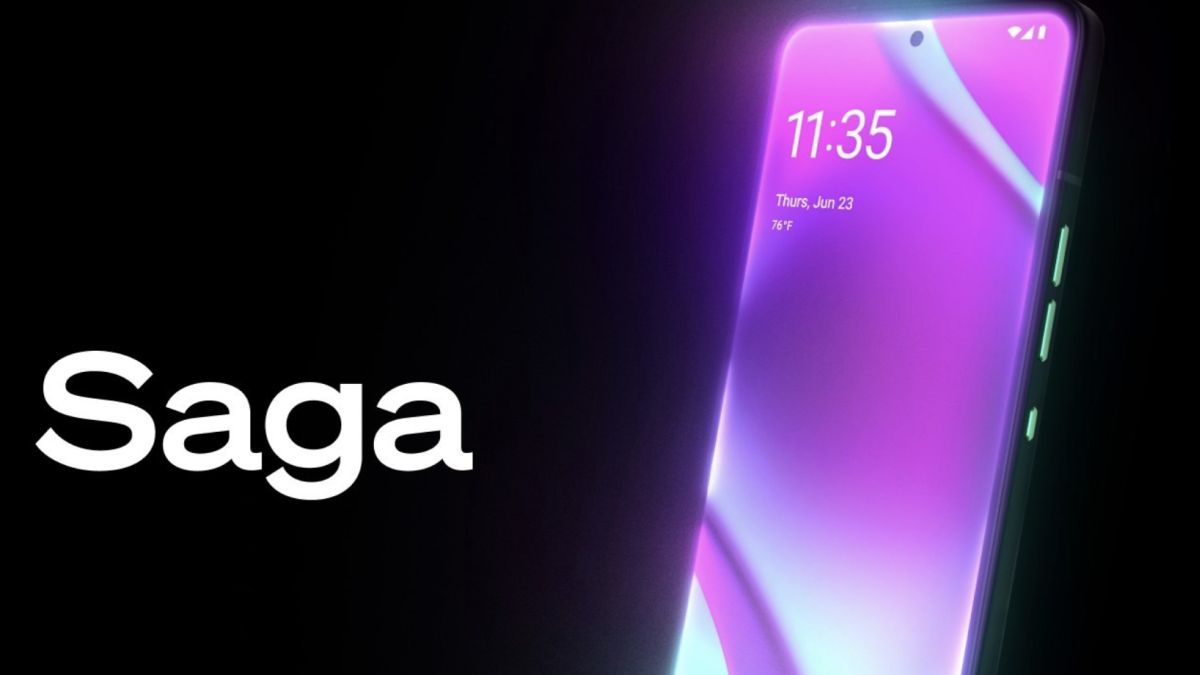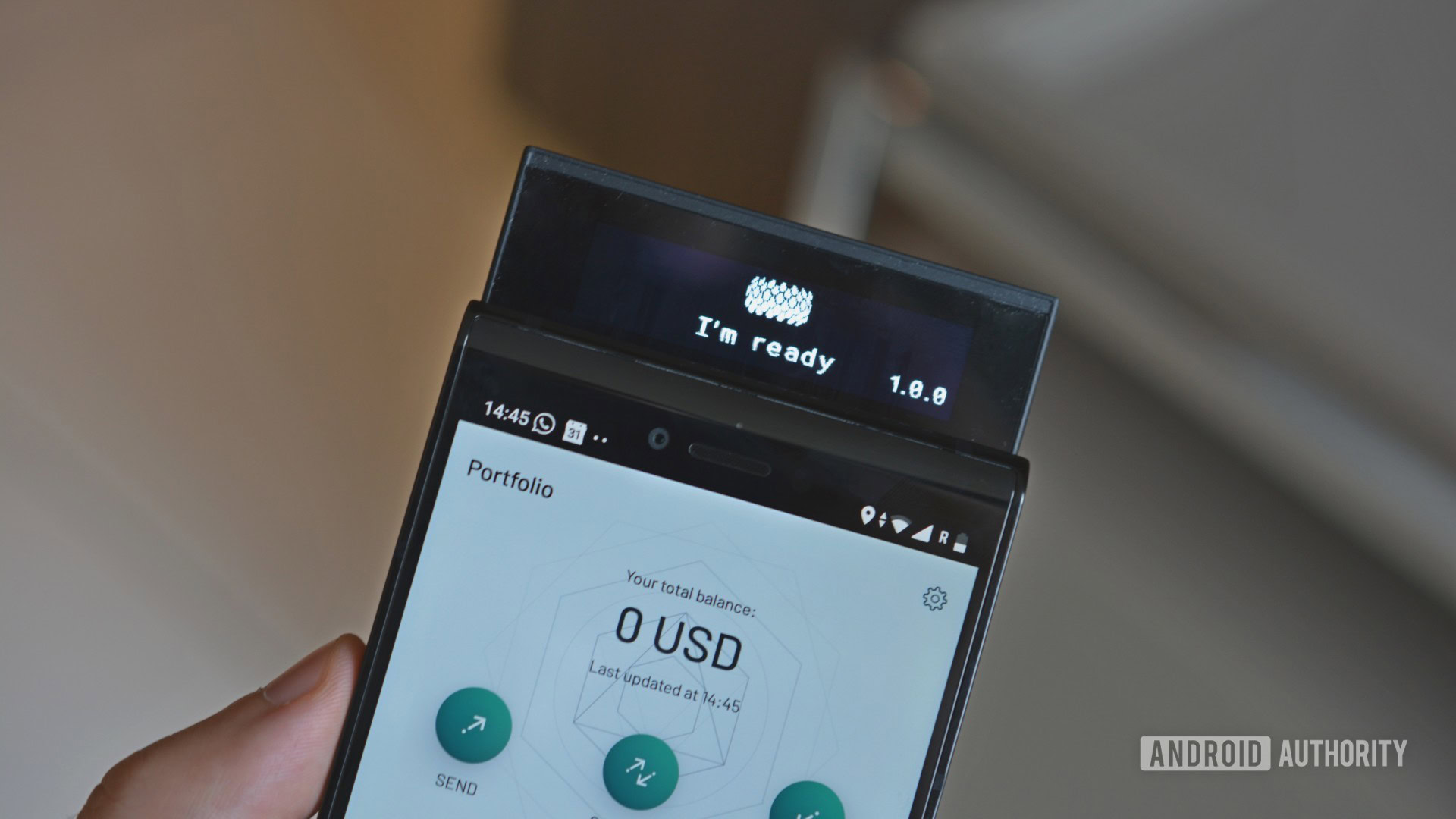Most people will agree that the smartphone industry is in desperate need of disruption. Outside of the foldable market, we’ve seen very little in terms of innovation and feature differentiation over recent years. So when a young startup with a pedigreed team announces that it’s building a smartphone to challenge that status quo, it’s hard not to get a little bit excited.
That’s exactly what happened when we first heard about the privacy-focused OSOM OV1 smartphone last year. In case you’re unfamiliar with the OSOM brand, it’s a new startup established by former Essential employees.
Earlier this week, we finally got to learn more about the OSOM OV1, which has now been delayed to early 2023. The device features high-end, flagship-grade specifications, with a proper $1,000 price tag to match. In a big twist, however, OSOM is no longer marketing the OV1 as its own product. Instead, it has partnered with Solana, a blockchain company.
OSOM has pivoted from making a privacy-centric smartphone to one with blockchain integrations.
The Solana Saga, as it’s now called, promises to include “unique functionality and features tightly integrated with the Solana blockchain”. That’s certainly a massive pivot from OSOM’s initial goal of just delivering a privacy and security-centric Android smartphone. But does this new focus make any sense? Let’s break it down.
Catch up: What is blockchain technology?
What does the Solana Saga hope to accomplish?

If you’re wondering what makes the Solana Saga any different from previous niche blockchain/cryptocurrency smartphones, it’s not exactly clear. Browsing through the official website, you’ll chance across some choice quotes like “re-imagining web3 for mobile” and “removing friction for self-custody.” We once heard similar one-dimensional claims from companies like HTC and Sirin Labs. Needless to say, those endeavors didn’t succeed.
Luckily, some further digging reveals that the company has also announced a software development kit dubbed the Solana Mobile Stack. In a nutshell, it offers Android developers the tools required to build secure cryptocurrency wallets and Web3 apps. You can think of the stack as similar to Google Mobile Services (GMS), but for a far, far more niche use case.
Read more: What is Web3 and why is it so controversial?
As you’d expect, the Solana Mobile Stack will be pre-installed on every Solana Saga. This will also allow users to store their cryptocurrency wallet keys in a secure enclave on the device. Notably, this is the same security mechanism other Android phones use to safeguard sensitive data like fingerprints.
Solana expects developers to build cryptocurrency wallets and apps for its upcoming smartphone.
But does the average cryptocurrency user need a dedicated blockchain smartphone to facilitate simple transactions? Not really. You can already use decentralized apps (dApps) on just about any Android device, own NFTs with software wallets, and make cryptocurrency payments via a web browser. Sure, you may sacrifice a bit of security but nobody keeps their life’s savings on a mobile phone anyway.
Regardless of existing options, CEO Anatoly Yakovenko seems to think that Solana has something unique to offer. In a blog post accompanying the Saga’s launch, he wrote:
…Every day, I hear stories of people leaving dinners, conferences, and vacations to get back to their computers and sign important transactions. The mints, trades, listings, and transfers critical to the daily life of crypto-lovers are dragging us away from our lives with others. The only companies with the resources to materialize the self-custody mobile future we’re all dreaming of, Apple and Google, have had no updates to give on their roadmaps for crypto.
In other words, Solana claims that it will do what Google and Apple won’t — bake an entire ecosystem of crypto apps and experiences directly into the phone’s software. Whether that’s a good idea or not remains to be seen.
See also: The best cryptocurrency apps
Why blockchain smartphones don’t make sense

If there’s anything we know for sure, it’s that the demand for blockchain smartphones hasn’t really grown since 2018 when the HTC Exodus first broke cover. In fact, you could argue that it makes even less sense now. Web3 and NFTs have become extremely contentious topics these days and it’s not hard to see why either. Many believe that the market is flooded with half-baked and buggy platforms, or worse, completely fraudulent projects. And Solana has not managed to escape its share of controversy either.
Dive in: Why do people say NFTs are bad?
Over the past few months, the Solana blockchain has suffered multiple network outages due to a variety of software glitches, preventing users from transacting for as long as 18 hours. For many, the appeal of blockchain technology hinges on transparency, reliability, and decentralization. Solana hasn’t managed to deliver on these fronts so far and has attracted plenty of criticism for that.
Web3 and NFTs have become contentious topics, making the Solana Saga a controversial smartphone with limited appeal.
Keeping all of this in mind, it’s hard to see a scenario where the Solana Saga succeeds over other $1,000 smartphones. The Galaxy S22 series not only competes in the same price range but also offers Samsung’s long-established Blockchain Keystore. The latter allows you to securely store cryptocurrency and interface with decentralized apps, not too far off from Solana’s pitch. It’s also cryptocurrency-agnostic so you aren’t bound to Solana or any particular blockchain.
Do blockchain smartphones make sense?
103 votes
Back in 2018, we opined that the Sirin Finney smartphone (pictured above) didn’t make much sense at its $1,000 price tag. Have we come full circle just four years later with the Solana Saga? Only time will tell.
